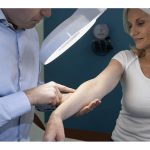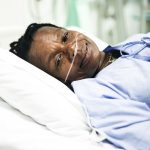
Giving melanoma patients a “personalized” vaccine can prompt an anti-tumor immune response that lasts for years, an early study finds. The study involved just eight patients with advanced melanoma, the deadliest form of skin cancer. But it builds on earlier work showing it is possible to spur the immune system to respond to an individual’s unique tumor. All eight patients underwent standard surgery for their melanoma, but were considered high risk for a recurrence. So researchers gave them an experimental vaccine called NeoVax. Unlike traditional vaccines, it is not a one-size-fits-all jab. Each patient’s vaccine was customized based on key “neoantigens” — abnormal proteins — that were present on their tumor cells. Even though those proteins are foreign, the immune system is not able, on its own, to generate a major response against them. “The problem is, the tumor itself doesn’t present enough of a danger signal,” said Dr. Patrick Ott, one of the researchers on the new study. Beyond that, tumors have various ways of eluding the body’s defenses, explained Ott, of the Dana-Farber Cancer Institute in Boston. The idea behind NeoVax is to present the immune system with the tumor neoantigens so it can generate a focused T cell response against them. T cells are immune system sentries that can find and destroy cancer cells. In earlier work, Ott and his colleagues found… read on > read on >















